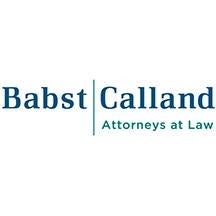Employment Bulletin
The West Virginia Supreme Court issued a decision in a closely watched case where the estate of a motorcyclist killed by an employee after she left work, and who was found to have numerous prescription drugs in her system at the time of the accident, sought to impose liability on the employer.
Facts.
Brandy Liggett began her employment with Speedway on September 13, 2015, and she received training while working at a Speedway store on September 13, 14, and 15. On September 15, Ms. Liggett worked the 6 a.m. to 2 p.m. shift. During that shift, her manager, Bobby Jo Maguire, and another employee, Jennifer Wells, observed Ms. Liggett nod off to sleep. Specifically, Ms. Maguire observed Ms. Liggett appearing to fall asleep a couple of times while watching training videos. Ms. Maguire sent Ms. Liggett outside, believing that the fresh air would wake her up, but then Ms. Maguire and Ms. Wells observed Ms. Liggett nodding her head and appearing to fall asleep while standing next to a trash can outside. Ms. Wells remarked to Ms. Maguire that “something was going on” and that “something might be wrong with” Ms. Liggett.
Nonetheless, as Ms. Liggett approached the end of her shift, she was asked if she would work an extra hour as Speedway needed another person from 2 p.m. to 3 p.m. because of a call off. Neither Ms. Maguire nor Ms. Wells could stay, so Ms. Liggett volunteered to stay that extra hour.
At 3 p.m., Ms. Liggett left the Speedway and drove to her son’s middle school to drop off football equipment. Thereafter, she drove home, but on her way home and about five miles from the school, she crossed the center line and struck a motorcycle, killing the driver, Kevin Jarrett. Following the accident, Ms. Liggett tested positive for amphetamines, benzodiazepine, and suboxone, none of which had been prescribed for her. Ms. Liggett pled guilty to driving under the influence causing death, negligent homicide, and driving left of center.
The Lawsuit.
Mr. Jarrett’s estate filed a wrongful death complaint against both Ms. Liggett and Speedway, as Ms. Liggett’s employer. Ms. Liggett’s carrier settled for policy limits, and the case proceeded against Speedway under the theory that Speedway, as the employer, was under a duty to control Ms. Liggett’s conduct and/or or that Speedway’s conduct caused, in part, the accident.
The circuit court denied Speedway’s motion for summary judgment based upon Speedway’s argument that it owed no duty to Mr. Jarrett or the public, and the case proceeded to trial. The jury returned a verdict that placed 70 percent of the fault on Ms. Liggett and 30 percent of the fault on Speedway. After the circuit court determined that the jury did not award sufficient non-economic damages, a second damages-only trial resulted in a verdict of a little over $6.6 million, of which Speedway was liable for a little over $2 million. Thereafter, Speedway appealed the circuit court’s denial of its motion for judgment as a matter of law.
The Issue.
On appeal, the Supreme Court found that the “issue is whether the circuit court erred in concluding that Speedway engaged in conduct that created an unreasonable risk of harm to others, including Mr. Jarrett, thereby triggering a legal duty on the part of Speedway to prevent Ms. Liggett from driving home after work.” Specifically, the Supreme Court noted that “[t]he issue before us is whether . . . Speedway’s conduct relating to Ms. Liggett created a foreseeable risk of harm to others that Speedway had a duty to guard against.” Speedway, No. 21-0215, pp. 9, 15.
In finding that the Speedway did not owe a duty here, the Supreme Court noted that, to have such a duty, Speedway “must have engaged in ‘affirmative conduct, thereafter realize[d] or should [have] realize[d] that such conduct . . . created an unreasonable risk ofharm to another[,] including Mr. Jarrett’” Speedway, No. 21-0215 at 15 (citing to Robertson v. LeMaster, 301 S.E.2d 563 (W. Va. 1983)).
The Supreme Court reasoned:
Speedway’s conduct of allowing Ms. Liggett to continue working her shift and then work an extra hour past her shift and to leave her unsupervised while watching training videos does not constitute “affirmative conduct” that “created an unreasonable risk of harm to another.” Rather, the evidence was uncontroverted at trial that Ms. Liggett arrived for her shift while already under the influence of drugs and then took more drugs at work surreptitiously. There was no evidence that anyone at Speedway contributed to her state of impairment from drugs by either providing or condoning her consumption of them. Aside from the three instances where Ms. Liggett was observed falling asleep, she exhibited no signs of impairment such as glassy eyes or slurred speech, and she worked the remainder of her shift (including the hour of overtime) without incident. Following the accident, Ms. Liggett tested positive for various and sundry prescription medications that she had illegally purchased “off the street” and she pled guilty to various crimes related to the accident, including driving under the influence causing death. Further, although respondent argues that Ms. Maguire either knew, or should have known, that Ms. Liggett was too “exhausted” to drive herself home, thereby suggesting that fatigue contributed to the accident, she points to no evidence indicating that fatigue was found to have caused or contributed to the accident. In allowing Ms. Liggett to drive her own vehicle home after her shift, Speedway “did no more than acquiesce in [her] determination to drive [her] own car.” Indeed, Ms. Liggett testified that she believed she was capable of driving herself home that day, that there were family members she could have called if she needed a ride, that she had money for a cab, and that she would have refused a ride home had anyone from Speedway offered to drive her. The evidence at trial, when viewed in the light most favorable to respondent, failed to demonstrate that Speedway engaged in affirmative conduct that created an unreasonable risk of harm to the motoring public, including Mr. Jarrett. Therefore, Speedway had no duty to exercise reasonable care by preventing Ms. Liggett from driving.
Speedway, No. 21-0215 at 16-19 (citations omitted).
Notably, the estate argued that despite Speedway’s employees seeing Ms. Liggett fall asleep during the training videos and changing garbage cans, and despite the employees thinking that “something was going on” and that “something might be wrong with” Ms. Liggett, Speedway’s supervisor should have either taken her car keys away from her or called either a cab or other family member to take her home. It posited that these “acts of omission” – i.e., its decisions “not to conduct an investigation of Ms. Liggett’s impairment” and “not to fully evaluate [Ms. Liggett] before and after her overtime shift” – represented “affirmative conduct” for which Speedway could be liable. Speedway, No. 21-0215 at 19, n. 17. The Supreme Court rejected this position because the evidence, in its view, “simply did not warrant an investigation or evaluation of Ms. Liggett for drugs and/or fatigue and, thus, a failure to act in this regard did not give rise to a duty on the part of Speedway to protect others by preventing Ms. Liggett from driving home after work.” Speedway, No. 21-0215 at 19, n. 17.
The Impact.
The Speedway decision represents a significant win for employers. An adverse decision would have potentially exposed an employer to liability if the employer – and especially front-line supervisors – failed to sufficiently investigate if an employee appeared “off” or just tired at work, and then gets in an accident on the way home from work. This would have put a significant burden on front-line supervisors to do “something” if she observed an employee who is tired or “off” and would have been an ominous extension of an employer’s duty of care to the general public.
Still, employers still need to be aware of whether circumstances indicate that an employee is under the influence of a drugs or alcohol, and if circumstances indicate that an employee is under the influence, employers must take affirmative steps to prevent the employee from driving a motor vehicle. In Speedway, for example, had the employee slurred her speech or appeared glassy-eyed, the Supreme Court may have found that such circumstances made it reasonably foreseeable that harm would occur if the employee were permitted to drive herself home. In this way, Speedway represents both a win and a cautionary tale for employers.




 />i
/>i

